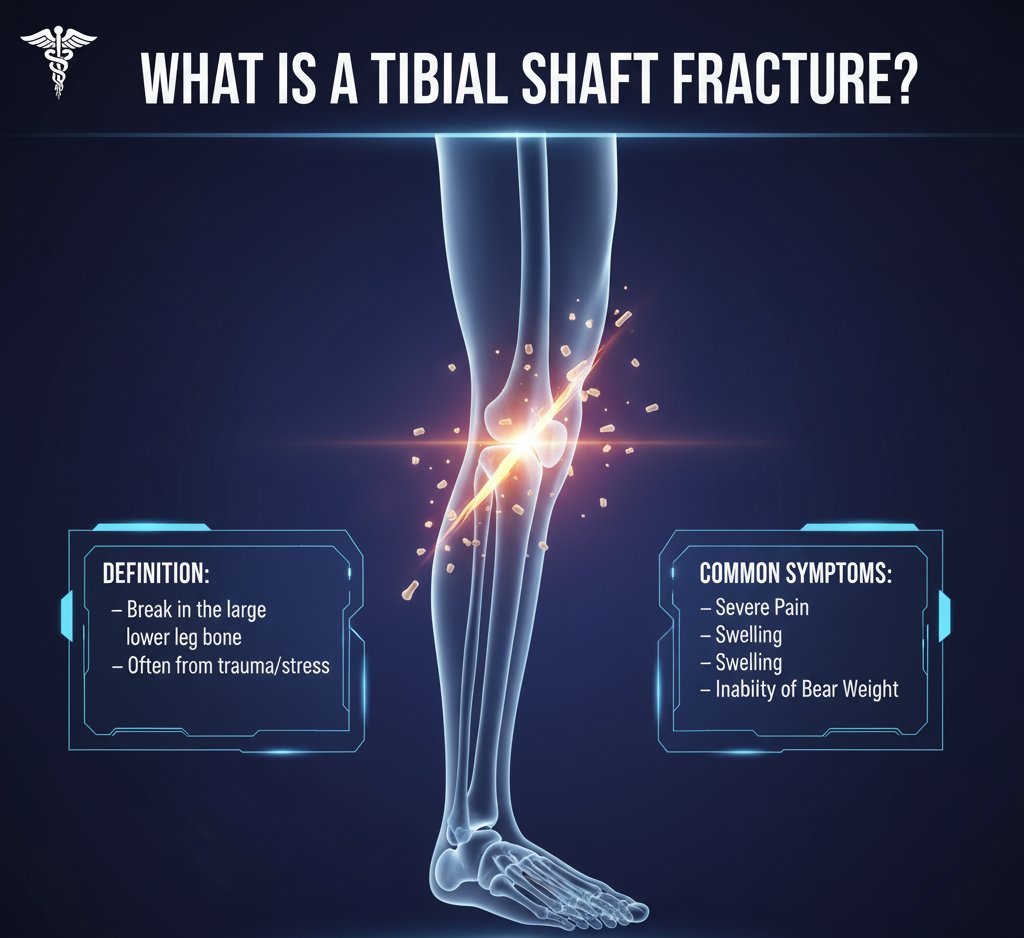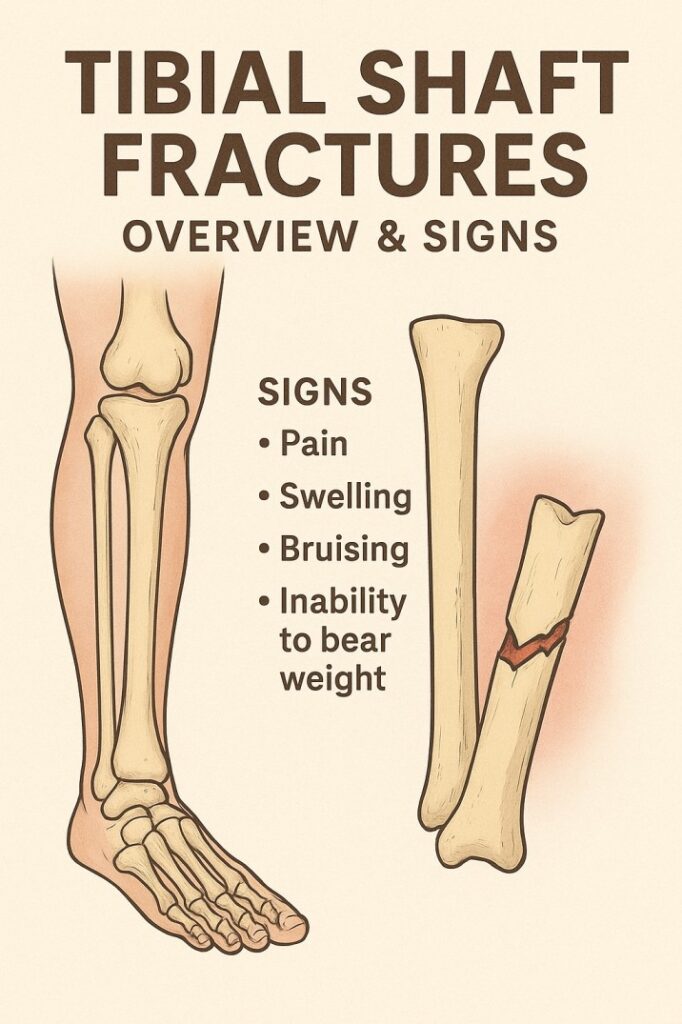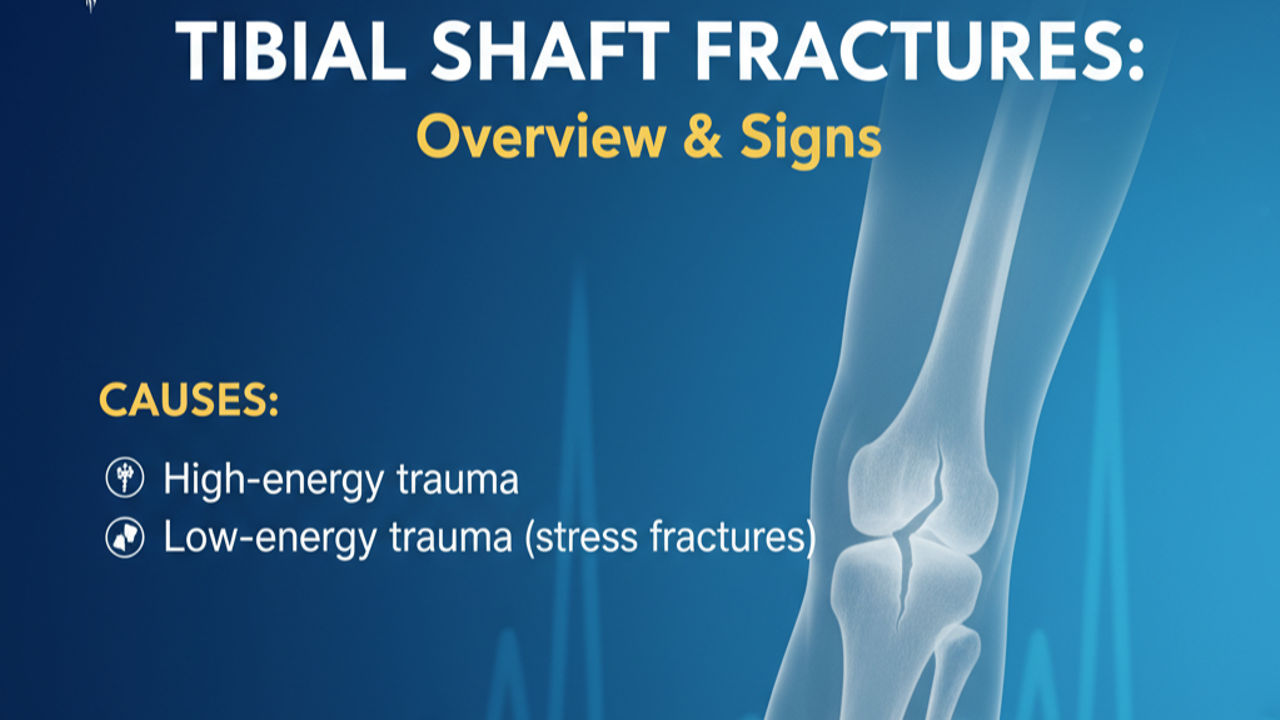Learn about tibial shaft fractures, their anatomy, causes, and warning signs like pain, swelling, and deformity. Complete guide for patients & professionals.
Introduction
The tibia, commonly known as the shinbone, is one of the strongest and most important bones in the human body. Positioned between the knee and ankle, it bears most of our body weight and is vital for walking, running, and daily movement. However, because of its load-bearing role, the tibia is one of the bones most prone to fractures—particularly tibial shaft fractures.
In this article, we will explore the anatomy of the tibia, what a tibial shaft fracture is, and the key signs and symptoms that help identify this serious injury.

Anatomy of the Tibia
The tibia has three major parts:
- Tibial Plateau – The upper part of the tibia near the knee.
- Tibial Shaft – The long, central portion of the tibia where most fractures occur.
- Tibial Plafond – The lower portion of the tibia near the ankle.
The tibial shaft particularly vulnerable to fractures because of its exposed position and high stress during physical activity or trauma. Unlike the ends of the tibia (which are broader and flatter), the shaft is triangular in shape, making it structurally unique.
What is a Tibial Shaft Fracture?
A tibial shaft fracture refers to a break in the middle section of the tibia, between the tibial plateau and tibial plafond. These injuries typically occur due to substantial trauma, such as road accidents, sports injuries, or falls from height.
Because tibial fractures often happen in high-impact accidents, doctors usually examine the entire body to rule out associated injuries.


Signs & Symptoms of Tibial Shaft Fractures
Recognizing the signs early can prevent complications. Common symptoms include:
- Sharp pain in the shin
- Visible deformity of the leg
- Bruising and swelling around the shin
- Inability to bear weight on the affected leg
If you notice these symptoms after trauma, immediate medical evaluation is essential.
Why Tibial Shaft Fractures Are Serious
- The tibia is crucial for mobility and weight-bearing.
- A fracture can significantly impact daily life and independence.
- Misdiagnosis or delayed treatment may lead to complications such as malunion, chronic pain, or reduced mobility.
FAQs on Tibial Shaft Fractures
Doctors usually confirm it through physical examination and imaging tests such as X-rays, CT scans, or MRIs.
Some stable fractures may heal with casting and immobilization, but many require surgical intervention like intramedullary nailing or plating.
Recovery varies, but most tibial shaft fractures take 3–6 months to heal, depending on severity and treatment.
Conclusion
A tibial shaft fracture is a serious orthopedic condition that demands prompt medical attention. Recognizing the sign pain, swelling, deformity, and inability to walk is the first step to timely treatment.
Whether you are a healthcare professional, athlete, or patient, understanding this condition can help ensure better outcomes and quicker recovery.

